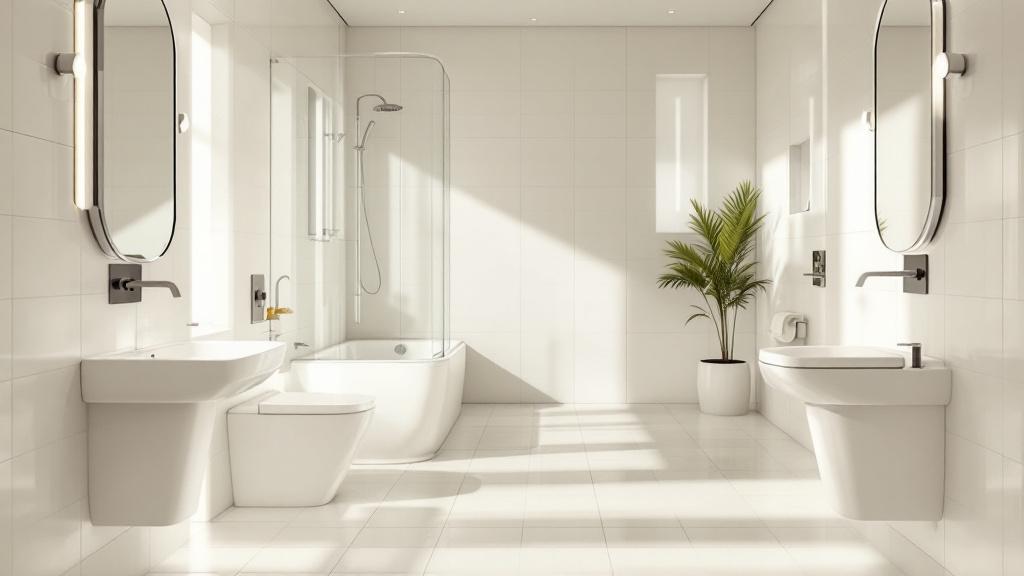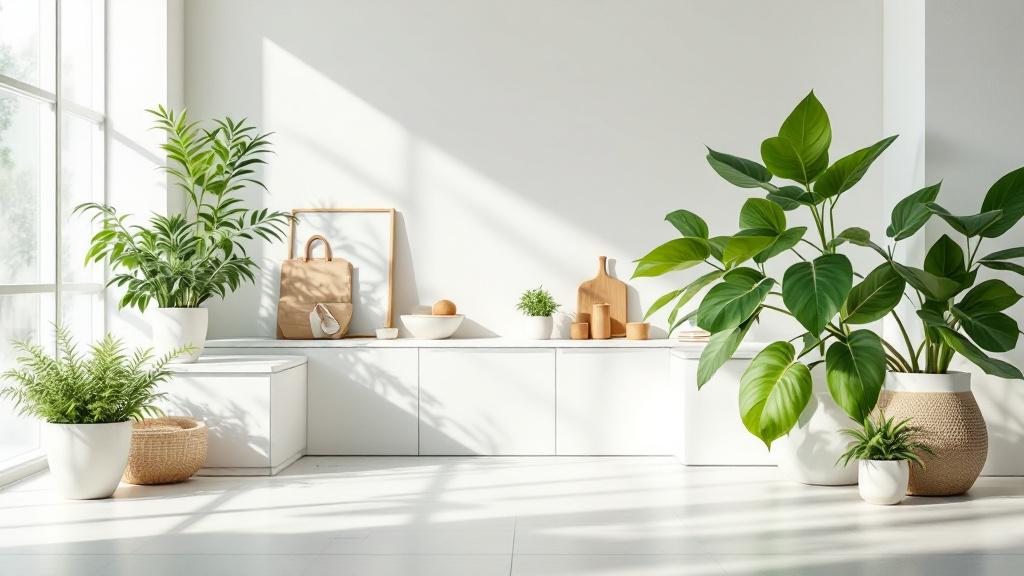A Complete Guide on Supporting Independence at Home
Discover tools for supporting independence at home! From organizational aids to adaptive equipment, empower autonomy for a fulfilling lifestyle.
.jpg)
Fostering Independence at Home
When it comes to supporting autonomy and independence at home, there are various tools and strategies that can make a significant difference. By providing individuals with the right resources, they can enhance their ability to carry out daily tasks and maintain a sense of self-sufficiency. This section will explore the importance of supporting autonomy and provide an overview of tools that can promote independence at home.
Importance of Supporting Autonomy
Supporting autonomy is essential for individuals of all ages and abilities. It helps to foster a sense of empowerment, self-confidence, and overall well-being. By enabling individuals to take control of their daily routines and make decisions that affect their lives, we contribute to their overall quality of life.
Supporting autonomy at home is particularly crucial for individuals with disabilities, older adults, or those recovering from injuries or illnesses. These individuals may face challenges in performing everyday activities independently. By providing them with the tools and resources they need, we can help them overcome barriers and maintain their independence.
Overview of Tools for Independence
There is a wide range of tools available to support independence at home. These tools can assist individuals in various aspects of daily life, such as organization, mobility, communication, home modifications, and personal care.
By utilizing these tools and implementing supportive strategies, individuals can overcome challenges and maintain a sense of independence within the comfort of their own homes. Whether it's through organizational tools, adaptive equipment, home modifications, communication aids, or personal care tools, each tool plays a vital role in promoting independence and enhancing the overall well-being of individuals.
Organizational Tools
To support independence at home, utilizing organizational tools can be immensely helpful. These tools assist individuals in managing their schedules, tasks, and responsibilities, ultimately promoting a sense of autonomy and productivity. Two key organizational tools that can aid in this process are calendars and planners, as well as task lists and reminders.
Utilizing Calendars and Planners
Calendars and planners are essential tools for keeping track of important dates, appointments, and commitments. By utilizing these tools effectively, individuals can maintain a structured schedule and stay organized.
Regardless of the format, calendars and planners can be personalized to meet individual needs. They can incorporate color-coding for different activities, prioritize tasks, and include space for notes or additional details. By regularly updating and referring to these tools, individuals can effectively manage their time, appointments, and commitments.
Implementing Task Lists and Reminders
Task lists and reminders are valuable tools in supporting independence at home. They help individuals stay organized, manage their responsibilities, and ensure tasks are completed in a timely manner. By breaking down larger tasks into smaller, manageable steps, individuals can enhance productivity and track their progress.
Task lists can be created on paper or digitally, depending on personal preference. They can be organized by priority, due dates, or categories to ensure a systematic approach to completing tasks. Reminders, whether in the form of alarms, notifications, or alerts, serve as prompts to help individuals stay on track and remember important tasks or appointments.
By utilizing calendars, planners, task lists, and reminders, individuals can enhance their organizational skills and foster independence at home. These tools empower individuals to effectively manage their time, responsibilities, and commitments, ultimately leading to a more efficient and autonomous lifestyle.
Adaptive Equipment
When it comes to supporting independence at home, adaptive equipment plays a crucial role in assisting individuals with various challenges. These tools are specifically designed to help enhance mobility and facilitate daily living tasks. In this section, we will explore two categories of adaptive equipment: tools for mobility assistance and devices for daily living tasks.
Tools for Mobility Assistance
For individuals with mobility limitations, there are a variety of tools available to help improve their ability to move around and maintain independence. These tools are designed to provide support, stability, and ease of movement. Here are some examples:
Devices for Daily Living Tasks
Performing daily living tasks independently can be challenging for individuals with certain disabilities or limitations. However, there are a variety of devices available that can help make these tasks more manageable. Here are some examples:
These adaptive equipment options can greatly contribute to promoting independence and improving the quality of life for individuals facing mobility or daily living challenges. It's important to consider individual needs and consult with healthcare professionals or occupational therapists to determine the most appropriate tools for specific situations.
Home Modifications
Creating a supportive and accessible environment at home is essential for promoting independence. By making modifications to the living space, individuals can navigate their surroundings with greater ease and safety. In this section, we will explore two key aspects of home modifications: creating accessible spaces and installing safety features.
Creating Accessible Spaces
To foster independence, it's important to ensure that the home environment is accessible to all individuals. Here are some modifications that can be made to create accessible spaces:
- Widening Doorways: Widening doorways allows for easy passage of mobility aids such as wheelchairs or walkers. The standard doorway width of 32 inches can be expanded to accommodate individuals with mobility challenges.
- Ramps and Lifts: Installing ramps or lifts can eliminate barriers posed by stairs, making different levels of the home accessible to everyone. Ramps should have gentle slopes and handrails for added support.
- Lever Door Handles: Replacing traditional doorknobs with lever handles can make it easier for individuals with limited hand dexterity to open and close doors.
- Lowered Countertops and Sinks: Lowering countertops and sinks in the kitchen and bathroom can accommodate individuals who use wheelchairs or have difficulty reaching higher surfaces.
- Grab Bars and Handrails: Installing grab bars and handrails in key areas of the home, such as bathrooms and staircases, provides stability and support for individuals with balance or mobility challenges.
Installing Safety Features
In addition to creating accessible spaces, installing safety features is crucial to promote independence and reduce the risk of accidents. Here are some safety features that can be incorporated into the home:
- Non-Slip Flooring: Using non-slip flooring materials, such as textured tiles or slip-resistant rugs, can help prevent falls, especially in areas prone to moisture, such as bathrooms and kitchens.
- Motion-Activated Lighting: Installing motion-activated lights in hallways, staircases, and other frequently used areas ensures that individuals have sufficient visibility, reducing the risk of tripping or falling.
- Smoke and Carbon Monoxide Detectors: Placing smoke detectors and carbon monoxide detectors in strategic locations throughout the home provides early detection and alerts in the event of a fire or gas leak.
- First Aid Kits and Emergency Supplies: Keeping well-stocked first aid kits and emergency supplies readily accessible allows individuals to address minor injuries or emergencies promptly.
- Accessible Bathroom Features: Incorporating features such as grab bars, shower chairs, and handheld showerheads in bathrooms enhances safety and independence during bathing and toileting activities.
By creating accessible spaces and installing safety features in the home, individuals can navigate their living environment with confidence and independence. These modifications not only promote autonomy but also contribute to a sense of security and well-being.
Communication Aids
When it comes to supporting independence at home, communication aids play a crucial role in enhancing the quality of life for individuals who may have difficulties with communication. These aids can help bridge the gap and enable effective communication, fostering independence and social interaction. In this section, we will explore two types of communication aids: assistive technologies for communication and devices for social interaction.
Assistive Technologies for Communication
Assistive technologies for communication encompass a wide range of tools and devices designed to assist individuals with communication challenges. These aids aim to facilitate effective communication, enabling individuals to express their thoughts, needs, and desires. Here are some common assistive technologies for communication:
Assistive technologies for communication empower individuals to express themselves effectively, enabling greater autonomy and participation in daily activities.
Devices for Social Interaction
Social interaction is an essential aspect of independence and overall well-being. For individuals who may face challenges in social settings, various devices can help facilitate social interactions and foster meaningful connections. Here are some devices commonly used for social interaction:
Devices for social interaction empower individuals to maintain relationships, engage in social activities, and reduce feelings of isolation.
By utilizing assistive technologies for communication and devices for social interaction, individuals can overcome communication barriers and enhance their independence at home. These aids not only support effective communication but also enable individuals to participate in social interactions, fostering a sense of connection and well-being.
Personal Care Tools
Assisting individuals with personal care tasks is a crucial aspect of supporting their independence at home. There are various adaptive devices available that can help facilitate personal hygiene and grooming routines. In this section, we will explore two categories of personal care tools: adaptive devices for personal hygiene and tools for dressing and grooming.
Adaptive Devices for Personal Hygiene
Adaptive devices for personal hygiene are designed to assist individuals who may have difficulty performing tasks such as bathing, toileting, and oral care independently. These devices can provide support, stability, and increased accessibility, allowing individuals to maintain their personal hygiene with greater ease and confidence.
These adaptive devices can be selected based on the specific needs and abilities of the individual. It is recommended to consult with a healthcare professional or occupational therapist to determine the most suitable devices for personal hygiene tasks.
Tools for Dressing and Grooming
Tasks related to dressing and grooming can also be made easier with the use of appropriate tools. These tools are designed to enhance independence and assist individuals in activities such as dressing, hair care, and nail care.
By utilizing these tools, individuals can overcome challenges associated with fine motor skills, limited dexterity, or mobility issues. It is important to consider the individual's specific needs and preferences when selecting the appropriate tools for dressing and grooming.
Supporting independence in personal care tasks not only boosts self-confidence but also promotes overall well-being. These adaptive devices and tools play a vital role in empowering individuals to maintain their personal hygiene and grooming routines with greater autonomy.
Sources
https://www.berkshiremontessori.org/-ways-to-support-independence
https://www.harborchase.com/maintaining-independence
https://www.scholastic.com/social-skills-for-kids/how-to-foster-independence
https://www.lakesidechristianschool.org/foster-independence-home

How In-Home Care Services Help with Bathing and Grooming

Dusting and Vacuuming: Keeping the Home Allergen-Free

Why Local CDS Providers Are Vital for Community Support

How In-Home Care Services Help Seniors with Speech Impairments

The Importance of Regular Health Monitoring in In-Home Care

